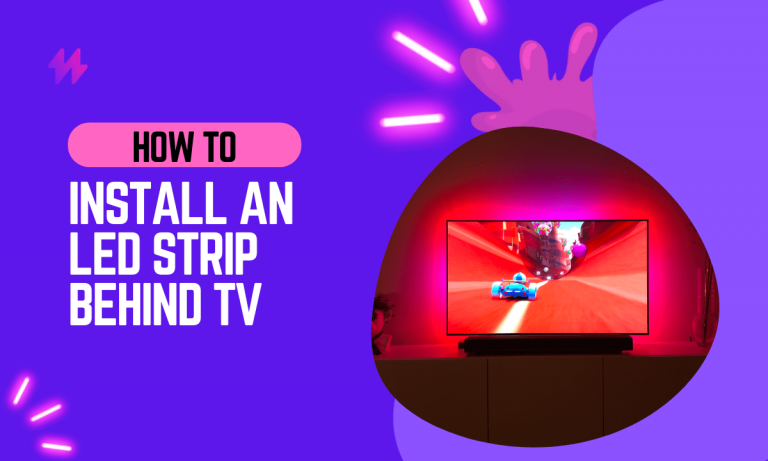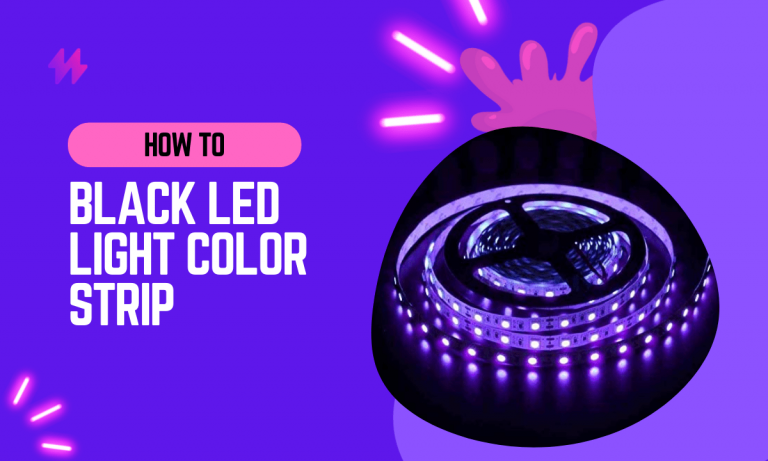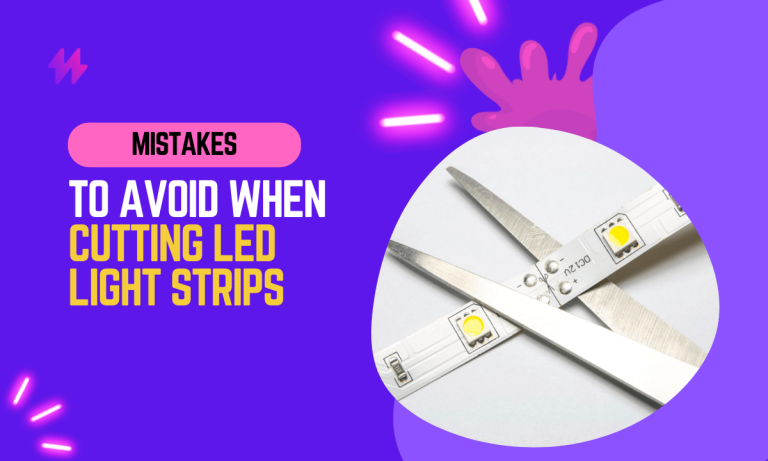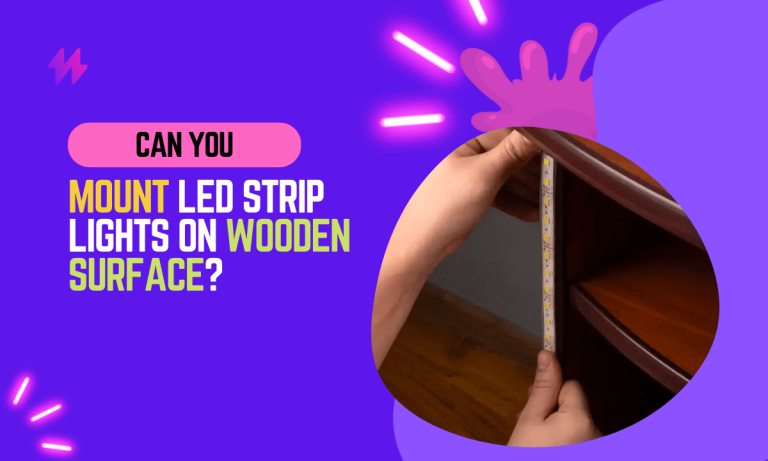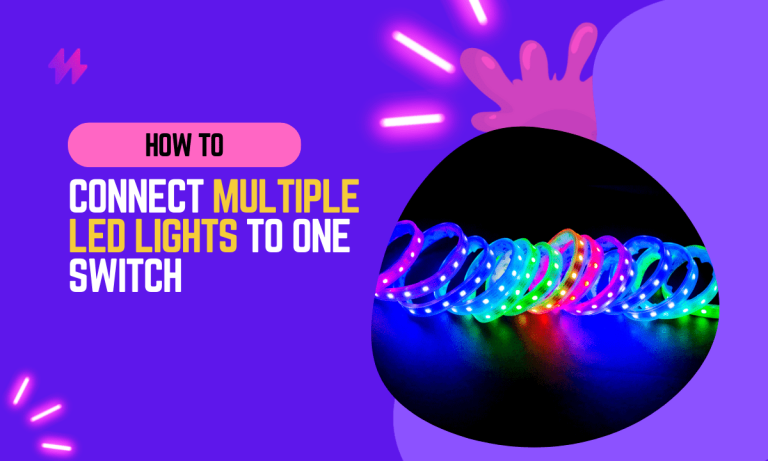How to Choose Outdoor LED Strip Lights
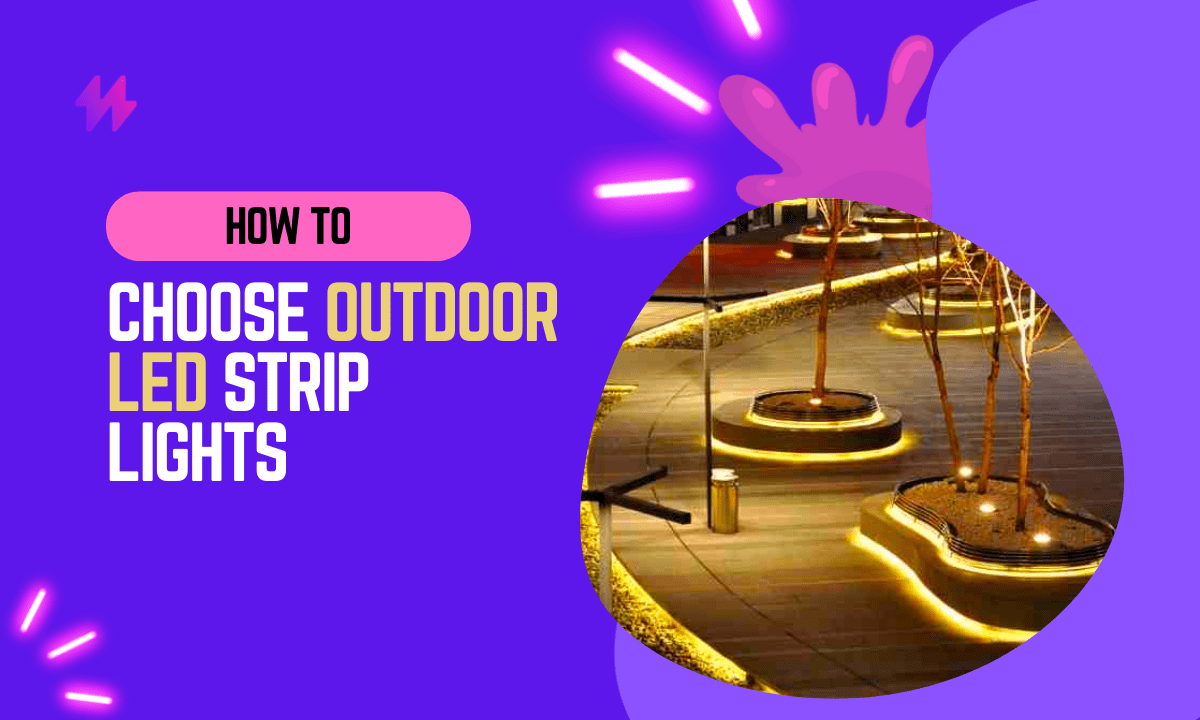
Outdoor LED strip lights are a great way to light up your yard or patio for nighttime gatherings, and they come in a variety of colors and styles to fit your needs. But with so many options available, how do you know which ones are right for you? Here is a guide to choosing the best outdoor LED strip lights for your home.
When selecting outdoor LED strip lights, consider the brightness level you require to ensure adequate illumination for your space. Additionally, ensure you evaluate the different lighting requirements for your particular setup, as options like RGB LEDs and white lighting can greatly enhance the aesthetic of your outdoor area.
Understanding the Difference Between Standard LED Lights and Outdoor LED Strip Lights
There are two types of LED lights: Standard and Outdoor.
When choosing between standard and outdoor LED lights, it is essential to consider how they will fit into your overall lighting setup and meet your brightness needs. The right outdoor strip light can provide enough illumination for various applications, allowing you to achieve both functional and aesthetic goals in your next lighting project.
Understanding Standard LED Strip Lights: A Comprehensive Guide
These are designed for indoor use only and generally come in a variety of colors, from bright white to warm white. They are typically used under cabinets or shelves, behind TV screens, and along bar tops. While they can be used outdoors, it is not recommended as they may not be water resistant and may overheat if left exposed to the sun for too long.
When you are thinking about outdoor lighting options, selecting the right type of LED strip lights can play a crucial role in achieving your desired ambiance. For projects such as patio lighting or general lighting purposes, understanding how to choose outdoor LED strip lights that provide bright lighting while ensuring durability against environmental factors is essential for a successful lighting project.
**Exploring the Versatility of Outdoor LED Strip Lights: Key Features and Benefits**
Outdoor LED strip lights are specifically designed for outdoor use, making them more durable and weather-resistant than standard LED strip lights. These lights usually come with additional features like an IP67 waterproof rating, which means that they can withstand short periods of being submerged in water or heavy rain without damage. Outdoor LED strip lights are commonly used in backyards or on patios and can be installed in a variety of places like under stairs or along the edge of your roof.
Outdoor LED strip lights offer a versatile solution for enhancing your outdoor lighting design, thanks to their durable construction and weather resistance. Whether you aim to create accent lighting for your garden or use LED strip products for perimeter lighting, you can customize your outdoor space with the perfect lights tailored to your specific needs.
Understanding the Water Resistance of Outdoor LED Strip Lights
Many outdoor LED strip lights are designed with water resistance in mind. Some models come with an IP rating of IP67 or higher, which means they can safely be submerged in water without damage. However, it’s important to check the specifications of any LED strip lights you’re considering to make sure they are truly water-resistant.
When you’re looking for the best options in outdoor LED strip lights, it’s vital to prioritize those designed for high brightness and water resistance to withstand various weather conditions. Choosing LED strip lighting with a high color rendering index can dramatically enhance the beauty of your landscape, creating impressive visual effects with color-changing lighting options or bright white lighting options.
IP65 Rated Outdoor LED Strip Lights: Understanding Water Resistance
If you’re looking for a water-resistant LED light strip, there are several options available. One of the most popular and reliable is IP65-rated LED light strips, which have an IP rating of 65. This rating means that the lights can withstand low-pressure water jets from all directions, making them ideal for outdoor use.
For outdoor projects, it’s crucial to invest in high brightness strip lights that can deliver outstanding performance during various weather conditions. Additionally, incorporating multi-colored LEDs or RGB lighting can create a stunning visual effect, enhancing your outdoor ambiance effectively.
IP68 Rated LED Light Strips: Understanding Waterproof Features
For a more heavy-duty and waterproof option, you may want to look for IP68-rated LED light strips. These lights have an IP rating of 68, meaning that they can withstand being submerged in water for long periods of time without damage. However, it’s important to note that not all LED strip lights with this rating are entirely waterproof- some may only be resistant to temporary submersion or splashes of water.
Choosing the right IP68-rated LED light strips can significantly enhance your outdoor lighting projects, especially in areas that are frequently exposed to moisture. For those looking to create vibrant outdoor environments, incorporating flexible strip lights with high power LEDs can provide an impressive and reliable light source for any setting.
Choosing the Right Outdoor LED Strip Lights: A Comprehensive Guide
When choosing outdoor LED strip lights, there are several factors you’ll want to consider. These include:
- Type of lighting: Outdoor LED strip lights come in several different varieties, including single-color, multi-color, and waterproof. You’ll also want to decide on the size of the light strips. Most strips are either 3 or 5 feet long, but there are also longer and shorter options available.
- Brightness and color: Outdoor LED strip lights come in a range of brightness levels, from low to high. This will depend on your personal preferences as well as whether you plan on using the lights for accent lighting or task lighting (like under cabinets). Outdoor LED strip lights also come in a wide range of colors, from cool white to warm white, and even color-changing options that allow you to set the mood for different occasions. If you’re looking for a specific color that’s not available in standard strips, there are also RGB (red-green-blue) strips that allow you to create any color imaginable.
- Water resistance: Outdoor LED strip lights are typically made for use outdoors and may come with an IP rating of IP67 or higher, which means they can be submerged in water without damage. If you plan on using your lights near a pool or hot tub, this is an important factor to keep in mind.
- Installation: Outdoor LED strip lights are available in both hardwired and plug-in models, depending on your preferences and budget. Hardwired models typically last longer than plug-in models, but if you don’t want to bother with hiring electricians, a plug-in model may be right for you.
When choosing outdoor LED strip lights, it’s important to consider all of these factors so that you can find the best lights for your home. With the right lighting, you can create an inviting outdoor space that you and your family can enjoy for years to come.
When selecting outdoor LED strip lights, it’s beneficial to explore options such as white LEDs and RGBW strip lights to achieve a versatile lighting design that can adapt to different moods and settings. Understanding the specific requirements of your outdoor project will help you make informed decisions on quality LEDs and other essential components, ensuring an effective lighting installation that enhances your space.
Where to Install Outdoor LED Strip Lights: How to Choose Outdoor LED Strip Lights
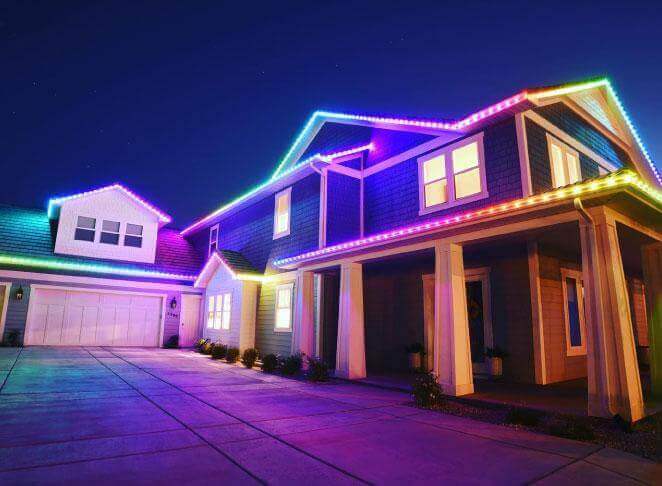
LED strip lights can be installed in a variety of places around your home or yard. Some common areas include:
- Under stairs
- Edge of your roof
- Around patios or decks
- Flower beds or garden beds
- Christmas Decorations
- Pool Areas
- Gazebos
- Fences
- Signage
- Hospitality/Commercial
Before you install your outdoor LED strip lights, it’s important to plan out where you want them first. This will help ensure that they are installed properly and provide the desired amount of light.
When planning your installation of LED strip lights, it’s wise to consider both practical uses like cove lighting or stair lighting and aesthetic enhancements such as backlighting or theatrical lighting effects. Additionally, selecting the right outdoor power supply and ensuring compatibility with your chosen LED strip products will guarantee smooth operation and longevity in outdoor lighting applications.
Final Thoughts on Choosing Outdoor LED Strip Lights for Your Needs
If you’re looking for a versatile and long-lasting lighting option for your outdoor space, outdoor LED strip lights are an excellent choice. Whether you want to create brighter task lighting or more ambient mood lighting, these durable lights can be installed in a variety of different places around your home. So if you’re looking to add some extra sparkle to your backyard or illuminate your deck at night, consider investing in outdoor LED strip lights today!
In conclusion, choosing the right outdoor LED strip lights requires careful consideration of several key factors to ensure durability, efficiency, and aesthetic appeal. First and foremost, it is crucial to select LED strips that are specifically rated for outdoor use. These lights are designed to withstand environmental elements such as moisture, temperature fluctuations, and UV exposure, which are critical for longevity and performance in outdoor settings. Look for LED strips with a high Ingress Protection (IP) rating, indicating effective sealing against dust intrusion and water. An IP65 rating or higher is generally recommended for outdoor applications, providing adequate protection against rain and sprinkler water.
Moreover, considering the color and brightness of the LED strip lights is essential for achieving the desired ambiance and functionality. For instance, warmer colors may be preferred for cozy patio areas, while brighter, cooler lights might be more suitable for security lighting along walkways. Additionally, opting for dimmable and color-changing options can offer flexibility to adapt to different occasions and needs. Another important aspect is the installation process; choosing LED strips with a strong adhesive backing or using appropriate mounting clips and channels can aid in a secure and neat setup. It’s also wise to consider energy efficiency and compatibility with existing outdoor lighting systems, ensuring that the LED strips can be easily integrated and managed. By addressing these considerations, homeowners and designers can effectively select outdoor LED strip lights that not only enhance the beauty and utility of their exterior spaces but also offer reliability and sustainability in the long run.
How To Choose Outdoor LED Strip Lights | Factors to Consider When Choosing Outdoor LED Strip Lights
Choosing the right outdoor LED strip lights involves careful consideration of length and brightness requirements tailored to your specific needs. The length of the strips should correspond to the intended application, whether for highlighting architectural features or providing general illumination in outdoor spaces. Brightness is equally important; understanding the difference in light output between high-power LEDs and lower-density options helps ensure you select the brightest strip lights for effective lighting. Factors like the viewing angle and optics also play a crucial role, as they determine how light is dispersed across the area. Understanding the color temperature and light color can enhance the aesthetics of your outdoor settings. Options like tunable lighting guide provide flexibility for transforming spaces from cool colors during the night to warmer tones, simulating the natural sunlight effect. For longer-lasting and energy-efficient solutions, considering LED strip manufacturing technologies and comparing them to traditional incandescent bulbs is essential, ensuring you make an informed choice that meets your lighting goals.
How to Choose Outdoor LED Strip Lights | Length and Brightness Requirements
Selecting the appropriate length and brightness for outdoor LED strip lights is essential for achieving the desired visual impact in outdoor spaces. Determine the total linear footage needed for your project, as this will influence the overall wattage and power consumption. LED strip projects often utilize varying lengths and configurations, such as strip light segments or continuous runs of tape lights. Understanding the brightness specification, which is typically indicated in lumens per meter, helps you gauge the actual light output. Choosing brighter light sources, such as high-brightness applications, can enhance visibility in areas like outdoor stair railings or for highlighting architectural features.
Brightness also plays a crucial role in the atmosphere created by your outdoor lighting. A higher LED density, such as 18-36 LEDs per meter, often results in a smooth light output that minimizes dim spots and enhances overall light color. For practicality, consider dimmable options to adjust light levels based on the time of day or specific activities. This flexibility is beneficial for both residential lighting applications and commercial lighting applications. Properly assessing strip brightness and ensuring it meets your illumination needs will result in a high-quality lighting installation that enhances outdoor spaces and complements any existing light sources.
Color Temperature and Color Options
Choosing the right color temperature is essential for achieving the desired ambiance with outdoor LED strip lights. Different temperatures create varied atmospheres. For example, warm white (around 2700K) mimics the glow of incandescent light bulbs, offering a cozy, inviting feel. On the other hand, cool white (5000K and above) provides a bright, clean light suitable for outdoor tasks and security applications. Understanding the temperature of light helps in making informed choices, especially for permanent lighting installations or flood illumination. Options like dim-to-warm LEDs allow for flexibility, adapting the light to different needs while ensuring high CRI lighting for good clean light quality.
Color options expand the versatility of LED strip lights, catering to various aesthetic and functional needs. RGB lights offer a spectrum of colors, perfect for creating dynamic atmospheres for outdoor parties or seasonal decorations. For more subdued settings, solid white strips can complement home lighting or highlight architectural features. SMD LEDs, available in multiple color choices, ensure a bright strip effect, while options like led rope light and ribbon lights maintain a low-profile design for discreet installation. The right strip light products enhance everything from cabinet lighting to outdoor bar areas, providing practical outdoor solutions that suit different tastes and applications.
Different Types of Outdoor LED Strip Lights
Understanding the different types of outdoor LED strip lights available can significantly impact your decision on how to choose outdoor LED strip lights. Options include RGB lights, which offer color versatility for dynamic atmospheres, and single-color LEDs, ideal for consistent illumination. Flexible strip lighting adapts easily to various surfaces, while rigid strip lighting provides a more structured look, suitable for outdoor billboard displays or accentuating architectural features. The lighting industry has embraced these innovations, allowing for energy-efficient solutions that replace incandescent lighting and fluorescent lamps. With LED technology, you also benefit from low power consumption and extended longevity, making them perfect for consistent use in outdoor applications like garden lighting or patio illumination. Understanding these light strip categories will help you select the best-led options for your specific needs, whether you’re looking for ambient lighting or task-oriented solutions that enhance your outdoor space.
RGB vs. Single Color LED Strip Lights
Outdoor LED strip lights come in two primary categories: RGB and single color options. RGB strips offer a versatile lighting solution with the ability to change colors, making them ideal for creating vibrant atmospheres for events or decorative purposes. These powered strips can emit a range of hues, from warm white to blue LED, catering to various settings like shelf lighting or indirect lighting. The adaptability of RGB strips can shift your outdoor space dramatically, making them perfect for those seeking to enhance their current lighting source without extensive modifications.
Single color LED strip lights, on the other hand, provide a more focused and consistent illumination. These strips typically emit a specific light output, often in white or other solid colors, which can be perfect for functional applications like outdoor task lighting or as an alternative to halogen bulbs. Their long-lasting nature and lower power consumption make them a strong choice for users wanting to replace incandescent light fixtures or incorporate low voltage lighting systems. Understanding the differences between these options is essential for achieving the desired effect in any outdoor space.
Flexible vs. Rigid LED Strip Options
Choosing between flexible and rigid LED strip options is essential for achieving the desired lighting effect. Flexible LED strips are ideal for applications where bending and shaping are necessary, such as around corners or uneven surfaces. These strips can easily conform to various shapes and configurations, making them perfect for custom installations like accent lighting and decorative applications, including rope lights and wall wash lighting. Their versatility allows for easy adjustment in strip light segments, catering to both outdoor and in-home lighting DIY projects. On the other hand, rigid LED strips offer a solid option for locations needing a stable and durable installation.
Rigid LED strips often provide higher light outputs due to their sturdy construction and higher density of individual LEDs. This can translate to enhanced illumination for environments where brightness is crucial, such as in bathroom lighting or as principal lighting sources. The use of lenses in these fixtures can help control light direction and reduce glare, providing a clean and focused light look. High power surface LEDs present in rigid options can accommodate higher power consumption, making them suitable for solar systems and outdoor utilization. Selecting the right type depends on the specific lighting needs, desired aesthetics, and whether the installation requires a dimmable power supply or low-profile LEDs.
Power Supply and Compatibility
Selecting the right voltage for outdoor use is crucial in determining how to choose outdoor LED strip lights effectively. Understanding strip light power consumption ensures an appropriate transformer is used to accommodate the watts required by the LED system. For instance, if using low output LEDs or flexfire LEDs, the total wattage of the strip emits must not exceed the transformer’s capacity. The compatibility with existing electrical systems also plays a significant role, as outdoor setups may require specific power outlets that can handle the full load of the lights. Choosing LEDs/m strip with varying densities can affect brightness levels; for instance, mid-range brightness can be achieved by selecting strips with higher LED density differences. Light bars and unadulterated daylight options can serve as excellent stand-alone lighting solutions, while color RGB lights provide versatility. Proper mounting of LEDs ensures optimal performance and longevity, allowing outdoor spaces to benefit from lighting that replicates natural daylight, enhancing overall aesthetics and functionality.
Selecting the Right Voltage for Outdoor Use
Choosing the right voltage is essential for effective outdoor LED strip lights. Outdoor environments demand a reliable electricity supply to ensure consistent performance, especially for applications like grow lights or reef tank lights. Understanding the led strip voltage is crucial, as it determines how well the strip can handle fluctuations in power supply. If the voltage is too low, the lights may dim, impacting their visibility and effectiveness. Opting for a complete lighting kit tailored for outdoor use can simplify this decision, ensuring the strips power consumption aligns with your setup.
Consider the strip light segments and how they match your lighting needs. Each led strip mean has specific operational requirements, influencing how the light looks when mounted. Strips with omni-directional LEDs tend to diffuse light more evenly over a surface, while those with a frosted lens provide a softer glow in white colors. An experienced lighting professional can help you choose a setup that balances mid brightness with strip light longevity, ensuring the lights perform optimally in outdoor conditions. Selecting the correct voltage not only enhances functionality but also prolongs the lifespan of your outdoor LED strip lights.
Ensuring Compatibility with Existing Electrical Systems
Compatibility with existing electrical systems is vital for effective outdoor lighting solutions. How to Choose Outdoor LED Strip Lights involves considering the power requirements of the lights dim or bright. Many LED strip outdoors come with specific voltage ratings; it’s crucial to match these with your power supply to prevent damage. Look at strip power consumption to ensure the electrical load is manageable. New installs may require replacing incandescent light sources with compatible LED options to ensure safety and performance.
Inspecting the wiring infrastructure is essential for seamless installation. Determine if your system can handle additional lighting and if the strip light wire matches the required specifications. Be aware of how many led emitters or segments you plan to mount; this impacts overall power distribution. For those using white colors—so bright hues are well-represented—understanding the strip light color and the length of the LED band becomes important. Proper installation and wiring will maximize the efficiency of your lighting setup while maintaining compatibility with existing indoor lighting applications.

